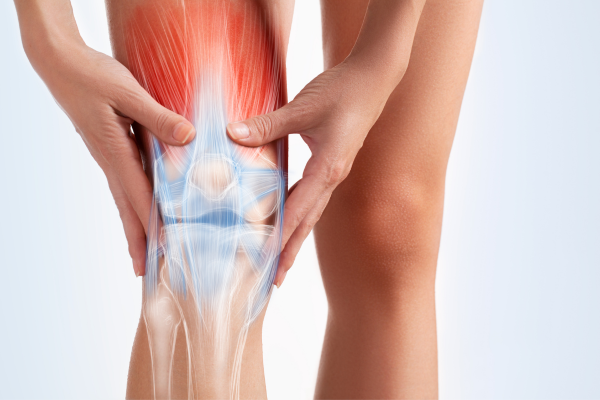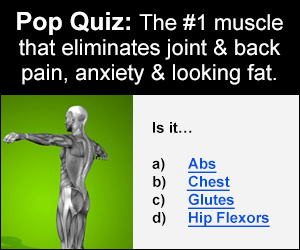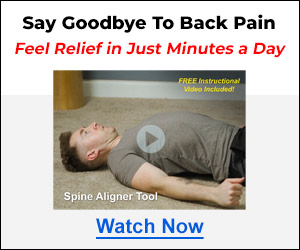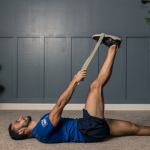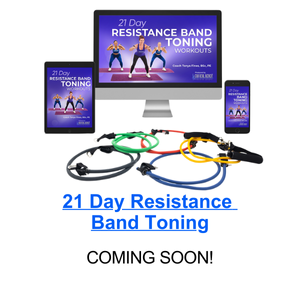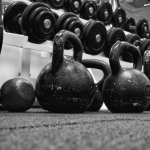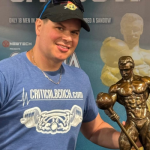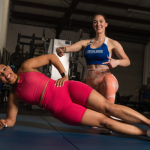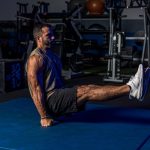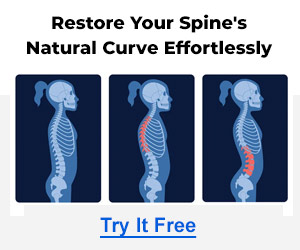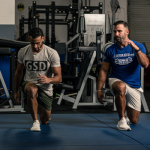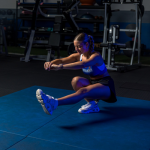Injuries are the bane of every athlete’s existence. Even the most seemingly minor injuries can bring a carefully crafted weight training schedule to a screeching halt.
This happens because the systems in our bodies are all interconnected–an injured muscle or torn ligament in one part of the body can cause problems elsewhere.
For example, depending on the severity of the injury, a torn ligament in the shoulder can prevent you from training shoulders, chest and even arms.
However, one of the most common–and problematic–injuries occurs in Anterior Cruciate Ligament (ACL), which is located in the knee.
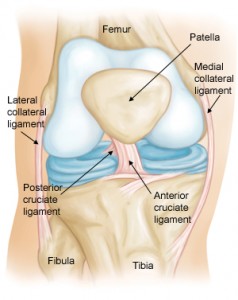 An ACL injury occurs when the Anterior Cruciate Ligament in the knee is torn. ACL injuries are very common among athletes who participate in sports involving a lot of sudden stops and changes in direction, including basketball, soccer, tennis, racquetball and volleyball.
An ACL injury occurs when the Anterior Cruciate Ligament in the knee is torn. ACL injuries are very common among athletes who participate in sports involving a lot of sudden stops and changes in direction, including basketball, soccer, tennis, racquetball and volleyball.
In reality though, an ACL injury can result from almost any activity where you are changing directions or returning to the ground after a jump.
Immediately after an ACL injury, the knee typically swells and feels unstable. Generally, it becomes very painful to put any weight at all on the knee.
In some ACL injuries, you may hear a popping sound when the injury occurs and even for a while afterwards.
Depending on the severity of the ACL injury, treatment can include surgery to replace the torn ligament followed by rehabilitation exercises to help the knee regain strength and stability.
In most cases though, treatment involves rest and some sort of structured therapy.
In all cases, prevention is the best treatment. If you are able to prevent the ACL injury from ever happening in the first place, you don’t need to worry about treatment and losing training gains due to extended periods of rest.
Prevention of ACL injuries is exactly what fitness pros Jedd Johnson and Jerry Schreck had in mind when they wrote their book “Deceleration Training to Prevent ACL Tears: A Systematic Progression for Safer, Stronger Knees.”
When it comes to ACLs, these guys really have intimate knowledge of prevention and treatment—they have both been training high school, college and professional athletes for more than a decade.
The guys note that in recent years, there has been a significant increase in the number of ACL injuries reported among athletes—particularly younger ones.
They attribute the majority of the growing number of injuries to lack of preparation and proper conditioning, along with poor training techniques.
In particular, they point to the fact that many younger athletes rely too heavily on their quads during decleration, acceleration and directional movements.
They refer to this as being quad-dominant. If your goal is reduce the likelihood of ACL injuries, then this is not what you want to do.
To counter this quad-dominant mindset, Jedd and Jerry have developed Deceleration Training to Prevent ACL Tears.

The purpose of the guide is demonstrate a systematic approach to training athletes that modifies their engrained movement patterns so that instead of the quads, the glute muscles take over when changing directions, speed and other sporting movements.
The book provides a series of drills that teach athletes how to decelerate their body differently and to get the neurological firing patterns down so the glutes are the main muscles recruited when decelerating the body rather than the quads.
The Deceleration Program is laid out in six phases, each of which builds on the previous phase, allowing for continual progression from simple to advanced techniques.
The length of each phase varies depending on the type of athlete being trained. For instance, if it’s a college or professional athlete, the then phases will run from one to three weeks.
But on the other hand, for younger athletes still in high school, the phases can run up to five weeks, depending on the age of the athlete.
I’ve had the opportunity to take an in-depth look at the Deceleration Program and I like what I see. They guys present a well-developed program that is built on solid principles.
The descriptions of the movements are clear and easy to follow. Images are included showing the proper beginning and end positions.
They provide numerous tips and suggestions along the way, which help you to understand what you need to be doing and how to be sure that you are doing it properly.
If you are prone to ACL injuries, concerned that you might be at some point in the future or just want to be certain that you are not using a ‘quad-dominant’ training technique then I suggest that you do your knees a favor and pick up a copy of the Deceleration Program.

